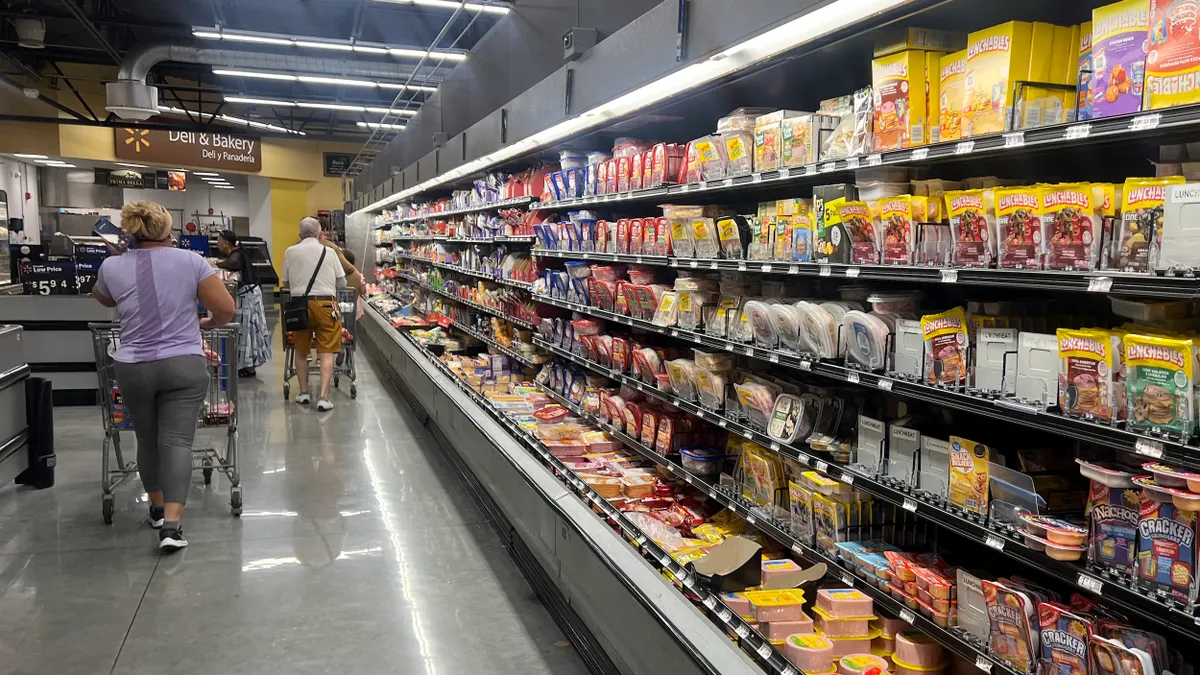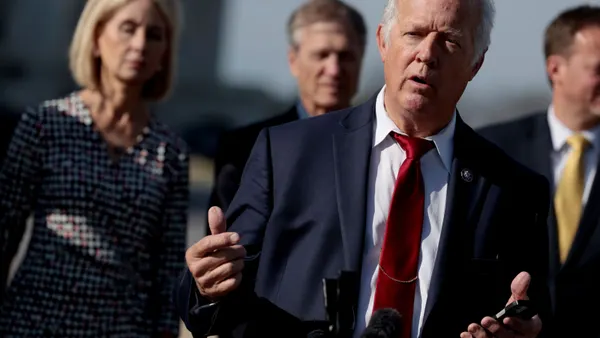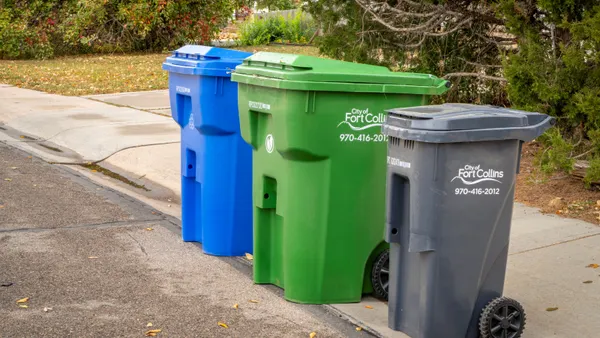Dive Brief:
- A new survey from the Glass Recycling Coalition (GRC) indicates that public expectations are one of the biggest factors behind why local governments and companies support glass recycling. Respondents from the public sector, the glass industry and MRFs all agreed that the cost of glass recycling should be shared by two or more parties — with packaging manufacturers near the top of that list.
- The lack of available end markets and contamination from single-stream collection were common concerns in the public sector. The glass industry shared these opinions, along with concern about service providers not accepting the material for collection. Grants or public-private partnerships were some of the most popular potential funding options among all respondents.
- For MRFs, transportation expenses and cost per ton were the top factors in determining where they sent material. The majority of respondents said bottle-to-bottle was the most common end use. About 40% had invested in additional glass clean-up equipment such as air knives, vacuums or blowers to separate paper and organics.
Dive Insight:
Since it was formed last year, the GRC has grown to nearly 40 members and has four state or local government partners. This includes many of the largest companies in the beverage and recycling industries. This survey, the first of what is planned to be an annual affair, is based on approximately 250 responses. The majority of these responses came from the public sector, which reported a mix of both curbside and drop-off programs in their areas.
Each stakeholder group wanting to see more cost-sharing for glass isn't surprising, though the breakdown of whom respondents thought should pay for it does offer interesting insight. While packaging manufacturers were a common choice for all categories, the MRF respondents were much more interested in seeing residents and cities or counties bear the costs, too. This aligns with the recent trend toward contracts that include revenue-sharing or sustainability fee provisions for recycling, often with longer terms to shield service providers and MRFs from some of the financial risk.
The shared interest in grants and public-private partnerships may also signal new opportunities for groups such as the Closed Loop Fund to help finance equipment. The fact that only 40% of MRF respondents had installed additional glass processing equipment was highlighted as a key finding by the GRC. The group has also been offering new online tools and training sessions to help stakeholders assess their options for what is still seen as a challenging material by many. Though some cities — such as Houston — have previously signaled they may bring glass back into their curbside programs, others have been moving in the opposite direction toward drop-off options. This latest GRC survey provides further evidence that residents may want the service, but the costs of providing it are still an underlying challenge.









